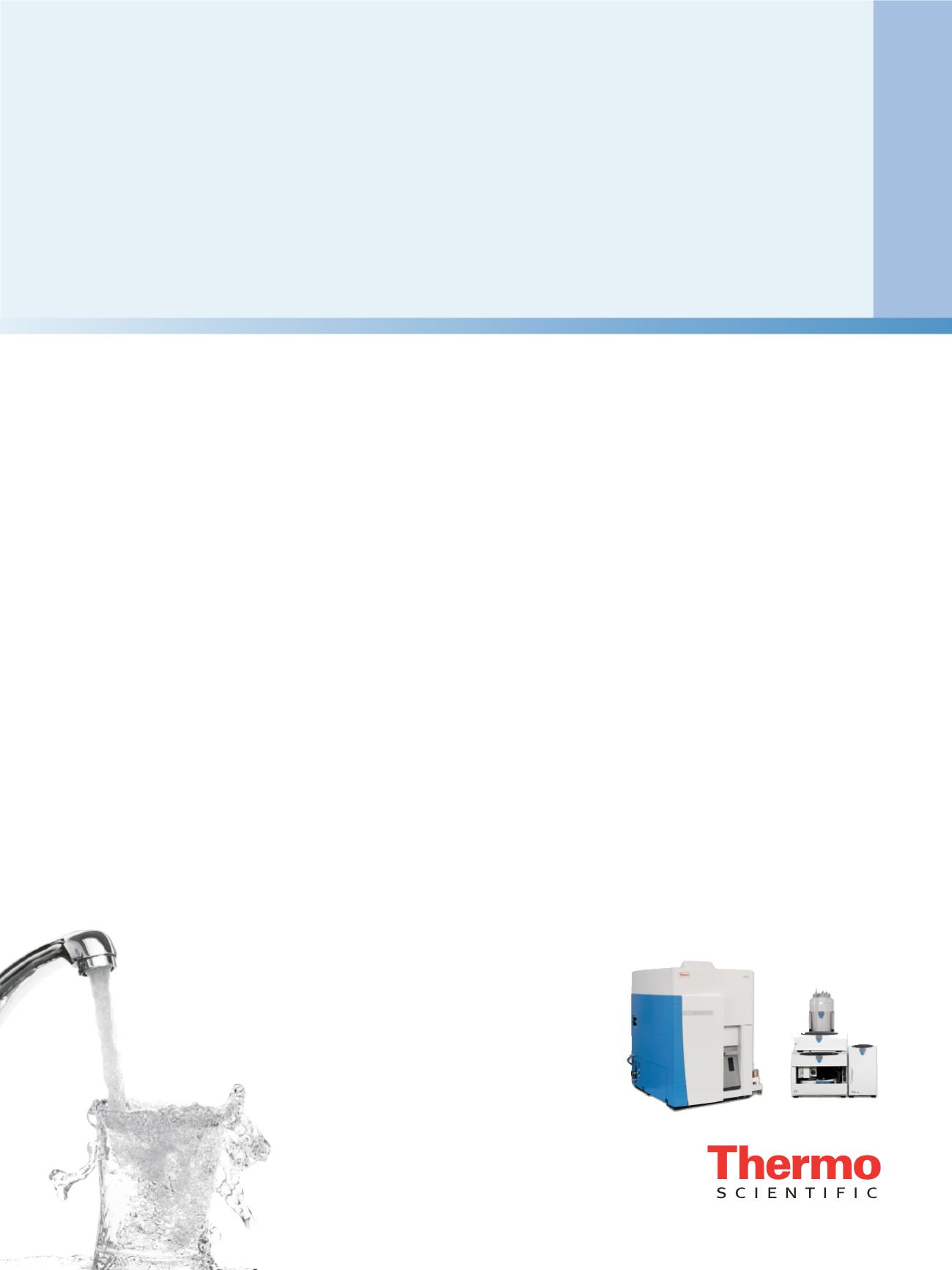

Sample and calibration solution preparation
Daily working standards were prepared by diluting the
appropriate quantity of commercially available stock
solutions (1000 µg/mL) of each chromium standard in a
0.1 mol/L ammonium nitrate solution adjusted to a pH of
4. Drinking water was collected in a PFA bottle previously
rinsed with high purity nitric acid. The water was
analyzed directly without dilution or pH adjustment in
order to keep the species unchanged before analysis.
Instrument configuration
Chromatographic separations were carried out using the
Thermo Scientific Dionex ICS-5000 ion chromatography
system. Due to its completely metal-free solvent pathway,
this system is non-contaminating and is therefore perfectly
suited for elemental speciation studies at the trace levels
required by this application. For the separation of the two
Cr species, a Thermo Scientific Dionex AG-7 anion
exchange column (2 x 50mm) was used throughout this
study. Although this column is designed to be used as a
guard column, its highly effective separation medium
contains capacities for the separation of both cationic and
anionic species
3
and it is therefore able to completely
separate both Cr species in less than three minutes. A
Thermo Scientific iCAP Qc ICP-MS was used as a high
performing elemental detector of the Cr species eluted
from the ICS-5000. Due to the use of flatapole technology
in the Thermo Scientific QCell collision cell, the iCAP Q
series of ICP-MS instruments offer the selectivity to suppress
spectral interferences while maintaining the high sensitivity
for trace metal detection in coupled applications such as
IC-ICP-MS.
Speciation analysis of Cr (III) and Cr (VI)
in drinking waters using anion exchange
chromatography coupled to the
Thermo Scientific iCAP Q ICP-MS
Daniel Kutscher, Shona McSheehy, Julian Wills, Thermo Fisher Scientific, Germany, Detlef Jensen,
Thermo Fisher Scientific, Switzerland
Application Note 43098
Key Words
iCAP Q, Cr speciation, Ion chromatography, Drinking water, ICS-5000
Goal
To develop a sensitive, robust and high throughput method for the
trace level analysis of Cr (III) and Cr (VI) species in natural waters using
IC-ICP-MS.
Introduction
Due to it widespread use in industrial applications such as
chromium plating, dye manufacturing and preservation of
wood and leather materials, chromium concentrations in
environmental samples are monitored on a routine basis.
Both the United States EPA and the European Union have
specified maximum admissible chromium concentrations
in their respective drinking water directives. As with many
other trace elements, chromium (Cr) is typically found in
more than one chemical form, each of which with
different chemical properties and behavior, such as
bioavailability and toxicity. For chromium, Cr (III) is
essential to human beings and involved in different
processes in the body while Cr (VI) is highly toxic. Total
Cr content therefore in, for example, a drinking water
sample does not provide sufficient information to evaluate
potential hazards to populations exposed to it. In order to
provide this critical information a supporting speciation
analysis is required to determine the amounts of the
different Cr species in the sample. The speciation analysis
of Cr however is a challenging task, since the stability of
different Cr species is easily affected by conditions during
sample collection and treatment
1
. For example, low pH
values may lead to the degradation of Cr (VI) to Cr (III)
due to the increased redox potential, while high pH values
may lead to the precipitation of Cr (III) as Cr(OH)
3
2
. An
additional difficulty in the accurate speciation analysis of
Cr by ICP-MS are the numerous spectral interferences
(e.g.
35
Cl
16
O
1
H
+
or
40
Ar
12
C
+
) on the most
abundant chromium isotope,
52
Cr.



















